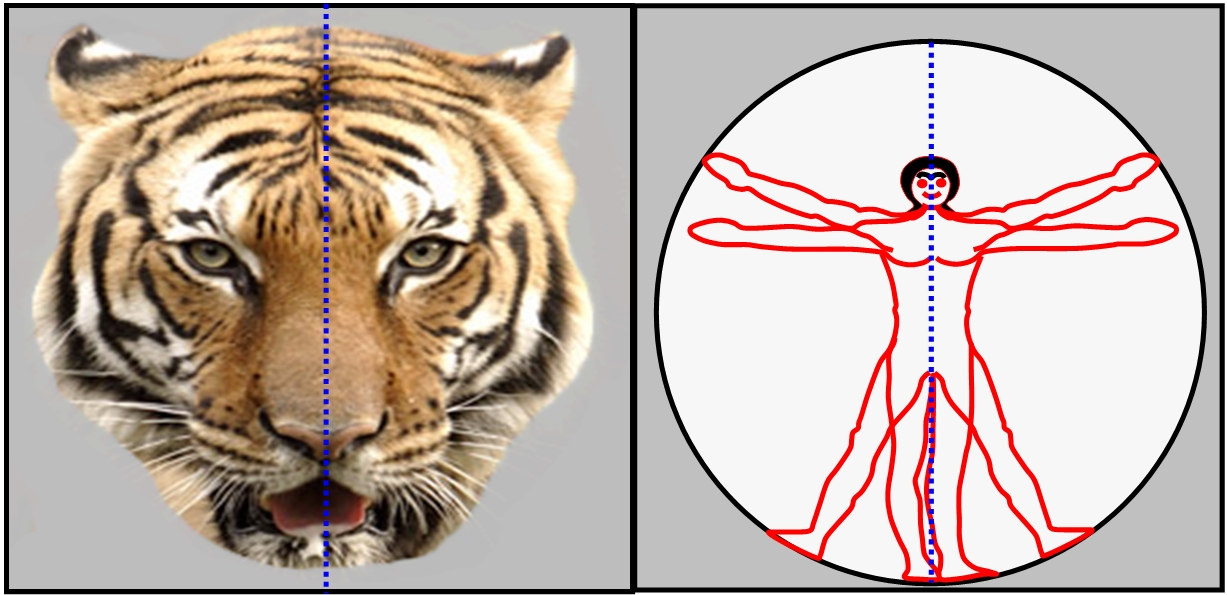TEASER - 13
HEAD MASTER
Ramayan is one of the greatest epic of Hindu (Indian) Mythology. It is a saga of victory of god Ram, with the help of god Hanuman over the evil Ravan. The saga is entwined with multiple kings and warriors. One out of following kings had an asymmetrical body, which one was that?
(a) Ravan, the demon king
(b) Sugreev, the monkey king
(c) Jatayu, the vulture king

THE EXPLANATION:
Symmetry is the preservation of form and configuration across a point, a line, or a plane where shape on one side match exactly to the shape on another side.
There can be several different types of symmetry and in each type, characteristics such as angles, side lengths, distances, shapes, and sizes are maintained. The main types of symmetry include: a) rotation, b) translation, c) glide-translation and d) reflection etc.
The rotational symmetry results from the transformation called rotation, which is the turning of a shape around a center point or the center of rotation. The distance to the center of rotation is kept constant and the amount of turning called the angle, is measured in degrees.
The translational symmetry results from the transformation called translation, which is just another term for "movement" with specific direction and magnitude. Translation is making a copy and then moving it.
The glide reflective symmetry results from the transformation called glide reflection and is actually a combination of a reflection and a translation.
The Reflection symmetry is the most familiar type of symmetry which is also known as line or bilateral symmetry. This result from the transformation called reflection occurring across a line or the axis. The corresponding point is at same distance from the axis as is the original point. Reflection may happen first or second but the figure that results after a reflection and translation is called glide reflection of the original figure.

SYMMETRICAL IMAGE ON EITHER SIDE OF A VERTICAL LINE
(Reflection symmetry)
Human and animal bodies are bilateral symmetries because one half (right side) is exact correspondence of other half (left side) on opposite side of a dividing plane passing through the center of the body.
In the Hindu epic Ramayan, Ravan was the demon king and he had ten heads on his solder. The Ravan had tormented god Ram and had abducted his wife Sita. God Ram killed the demon king Ravan over a long battle with the help of Hanuman, the monkey god, the Sugreev, the monkey king, Jatayu, the vulture king and Jamvant, the bear king among others.
Ten heads of Ravan was arranged in ‘T’ shaped pattern. The central head, attached to a single neck, was flanked by four heads on one side and five heads on other side making total ten.

TEN HEADED RAVAN WITH SINGLE NECK
Therefore the unequal number of heads on either side of central head created an imbalance and assymetricity in the body of Ravan, the demon king.
In terms of assymetricity, Ravan had inherited a defective body. It is possible that he was constantly troubled by the assymetricity of his body manifesting in his violent behavior and hot headedness.
To create a perfect symmetrical body for Ravan with ten heads, the heads must have to be arranged in a ‘Y’ shaped pattern with two central heads attached to a ‘Y’ shaped neck. The neck would be branching so that five (5) heads are equally divided on either side and are balanced.

TEN HEADED RAVAN WITH TWO NECKS
********







